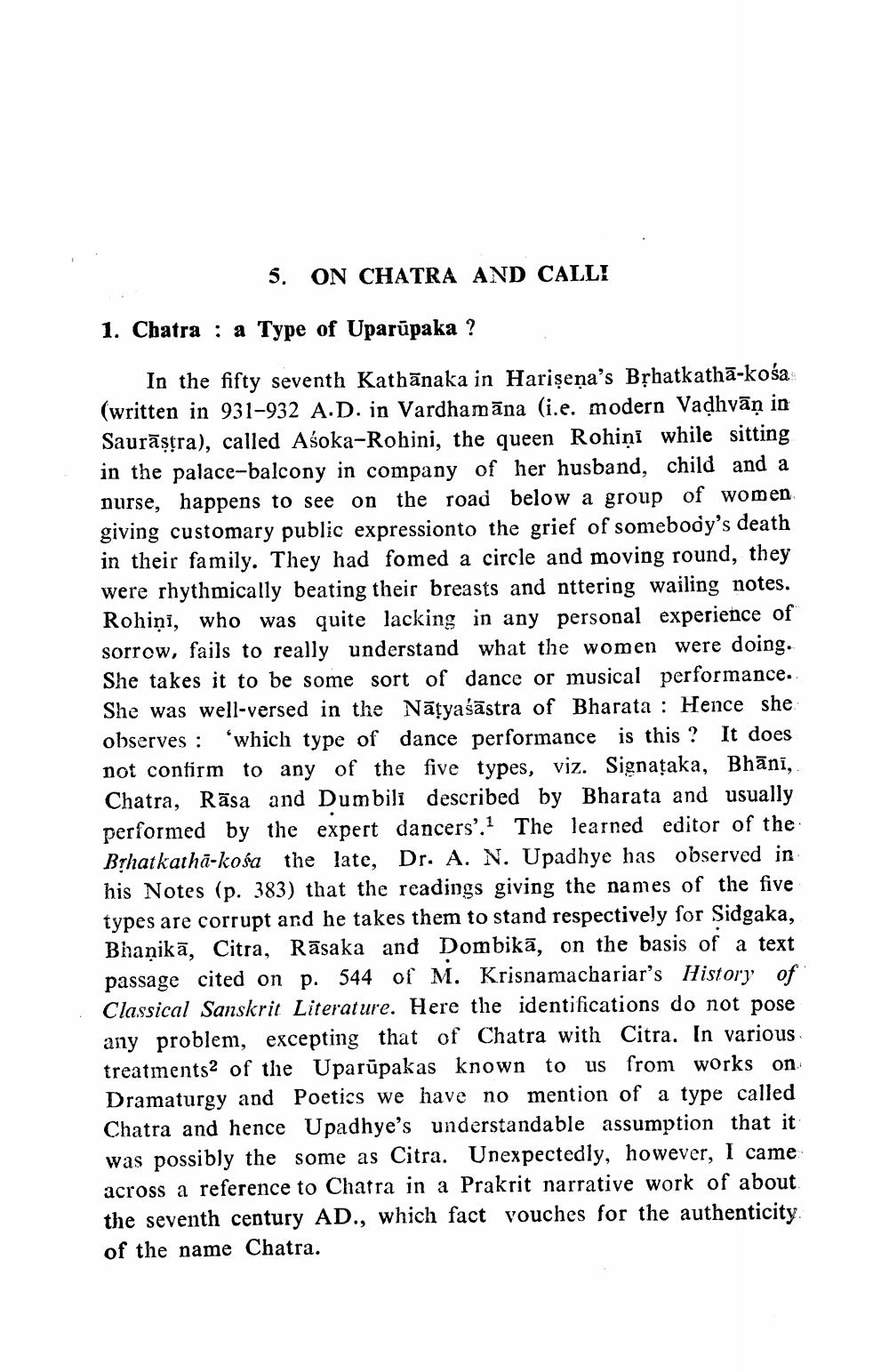________________
5. ON CHATRA AND CALL!
1. Chatra ; a Type of Uparūpaka ?
In the fifty seventh Kathānaka in Harişeņa's Bịhatkathā-kośa (written in 931-932 A.D. in Vardhamāna (i.e. modern Vadhyān in Saurāșțra), called Aśoka-Rohini, the queen Rohiņi while sitting in the palace-balcony in company of her husband, child and a nurse, happens to see on the road below a group of women giving customary public expressionto the grief of somebody's death in their family. They had fomed a circle and moving round, they were rhythmically beating their breasts and nttering wailing notes. Rohiņi, who was quite lacking in any personal experience of sorrow, fails to really understand what the women were doing. She takes it to be some sort of dance or musical performance. She was well-versed in the Nāțyaśāstra of Bharata : Hence she. observes : 'which type of dance performance is this? It does not confirm to any of the five types, viz. Signațaka, Bhānī, Chatra, Rāsa and Dumbili described by Bharata and usually performed by the expert dancers'.1 The learned editor of the Bīhatkathā-kośa the late, Dr. A. N. Upadhye has observed in his Notes (p. 383) that the readings giving the names of the five types are corrupt and he takes them to stand respectively for Sidgaka, Bhaņikā, Citra, Rāsaka and Dombikā, on the basis of a text passage cited on p. 544 of M. Krisnamachariar's History of Classical Sanskrit Literature. Here the identifications do not pose any problem, excepting that of Chatra with Citra. In various treatments of the Uparūpakas known to us from works on Dramaturgy and Poetics we have no mention of a type called Chatra and hence Upadhye's understandable assumption that it was possibly the some as Citra. Unexpectedly, however, I came across a reference to Chatra in a Prakrit narrative work of about the seventh century AD., which fact vouches for the authenticity of the name Chatra.




